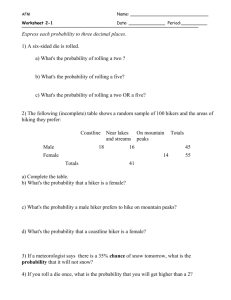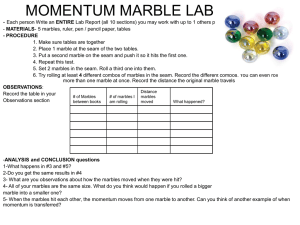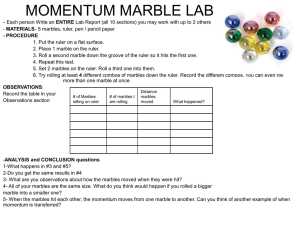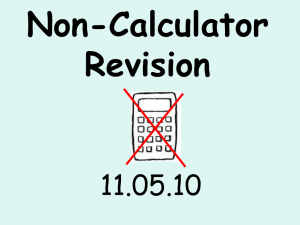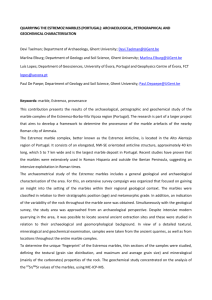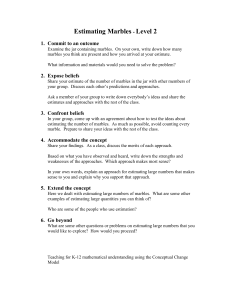Determining the Size of an “Atom” Much chemistry has been studied
advertisement
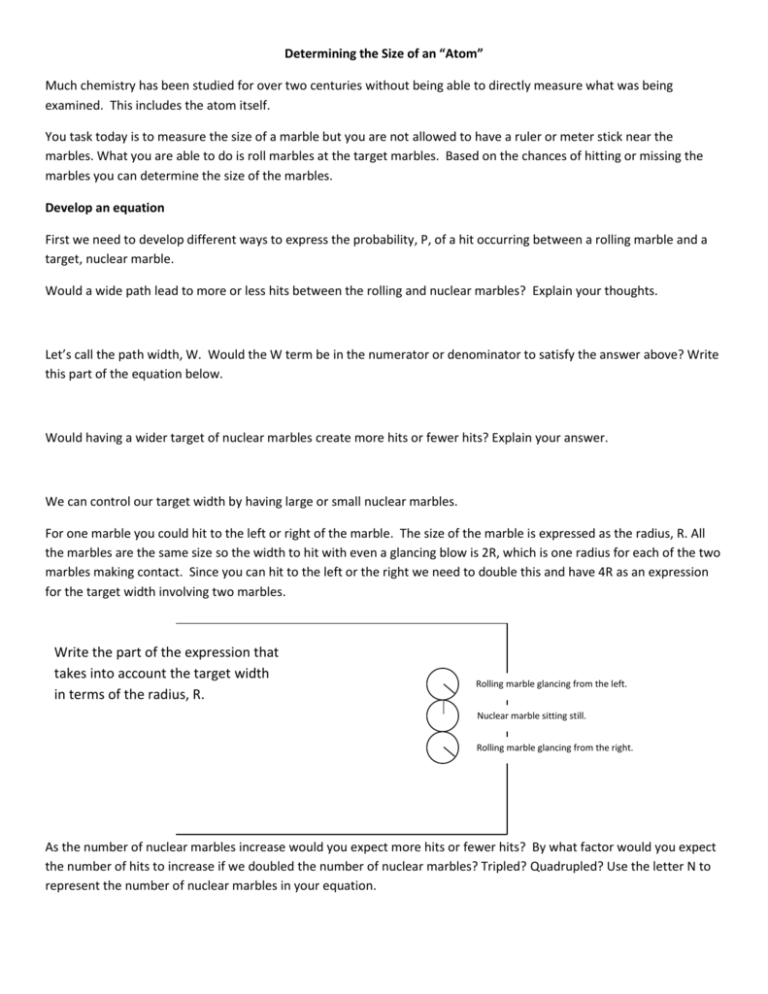
Determining the Size of an “Atom” Much chemistry has been studied for over two centuries without being able to directly measure what was being examined. This includes the atom itself. You task today is to measure the size of a marble but you are not allowed to have a ruler or meter stick near the marbles. What you are able to do is roll marbles at the target marbles. Based on the chances of hitting or missing the marbles you can determine the size of the marbles. Develop an equation First we need to develop different ways to express the probability, P, of a hit occurring between a rolling marble and a target, nuclear marble. Would a wide path lead to more or less hits between the rolling and nuclear marbles? Explain your thoughts. Let’s call the path width, W. Would the W term be in the numerator or denominator to satisfy the answer above? Write this part of the equation below. Would having a wider target of nuclear marbles create more hits or fewer hits? Explain your answer. We can control our target width by having large or small nuclear marbles. For one marble you could hit to the left or right of the marble. The size of the marble is expressed as the radius, R. All the marbles are the same size so the width to hit with even a glancing blow is 2R, which is one radius for each of the two marbles making contact. Since you can hit to the left or the right we need to double this and have 4R as an expression for the target width involving two marbles. Write the part of the expression that takes into account the target width in terms of the radius, R. Rolling marble glancing from the left. Rolling Marble Nuclear marble sitting still. . Rolling marble glancing from the right. Rolling Marble . As the number of nuclear marbles increase would you expect more hits or fewer hits? By what factor would you expect the number of hits to increase if we doubled the number of nuclear marbles? Tripled? Quadrupled? Use the letter N to represent the number of nuclear marbles in your equation. Expand on the equation above by including the information about the number of marbles. Combine all of the above into one equation that takes into account the path width, W, the size of the marble radius, R, and the number of marbles, N. There is one other method to determine the probability of a hit occurring for any given attempt. This is based purely on the ratio of hits, H, to trials, T. Write this mathematical expression below. Combine both of the expressions of probability. Solve for the radius of the marble, R. Collecting Data Place 4 to 7 nuclear marbles on the table. You might need to tape the nuclear marbles to the table with a small amount of tape. Set up your lab table as directed with meter stick borders. Do not roll fast or in a way that the marbles jump the meter stick border. DO NOT aim your rolling marble. Close or cover your eye to help with this. At least look away as you roll the marbles. Roll as many times as time permits. More trials generally will produce better results. Was it mentioned not to aim? Please don’t aim. Solving for the “Answer” Plug in your data and solve for the radius. Next, double the value of the radius to find the diameter and write this below. Show your work. This diameter is something that can be measured in our classroom with accuracy. Write the “correct” value for the diameter below. Lab Write-up In your lab book write a short discussion on your procedure. Include your data of all measurements and Hits and Trials. Also include thoughts on how valid indirect measurements can be in science based on your results. Part of this should also be to include the percent difference between your computed value and the measured value given to you by your teacher. Modified from a PRISMS activity developed by Dr. R Unruh at the University of Northern Iowa



